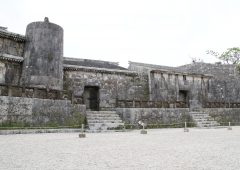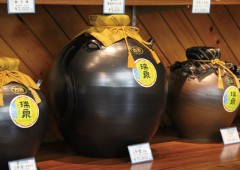2013.01.18
Army paper notes Kadena kept Agent Orange in ‘71
The clue was only a single sentence buried in 7,000 pages of government documents released by the Pentagon, but the powerful sentence states conclusively that the U.S. military maintained stocks of toxic herbicides, including Agent Orange, in Okinawa during the Vietnam War.
U.S. service veterans for years have been claiming the agents were in Okinawa during that era, and were charging their medical ailments have stemmed from exposure during their assignments here. The U.S. government has repeatedly denied the allegations and claims. The latest discovery came within a 1971 report entitled “Historical, Logistical, Political and Technical Aspects of the herbicide/defoliant program”.
The document was produced by the U.S. Army at Fort Detrick Maryland, home to the Pentagon biochemical weapons research. The specific reference was “Herbicide stockpiles elsewhere in PACOM-U.S. (Pacific Command) government restricted materials Thailand and Okinawa (Kadena).” The records came to light as result of a Freedom of Information initiated by Steve House, one of the veterans who charged in 2011 that there was Agent Orange buried in South Korea. He’s the one who discovered the reference to Kadena, along with Michelle Gatz, a Minnesota-based veterans service officer researching the herbicide usage in Okinawa.
Fort Detrick had drafted the report in response to a 1070 Washington ban on Agent Orange use by the military. Evidence at that time concluded that defoliants used by the Air Force spraying program in Vietnam for nearly a decade caused birth defects. The report discussed how best to dispose of surplus stocks of the herbicides. Some proposed using them in “undeveloped nations” or “burial in soil pits or settling ponds.”
That has Okinawa eyes open, because American servicemen have long claimed unwanted herbicides were buried at Futenma Marine Corps Air Station, and on former military land in Chatan.

 2024.07.07
2024.07.07 2024.06.21
2024.06.21 2024.05.15
2024.05.15 2024.02.07
2024.02.07 2024.01.31
2024.01.31 2023.11.02
2023.11.02 2023.10.26
2023.10.26 2023.09.29
2023.09.29 2023.09.01
2023.09.01






